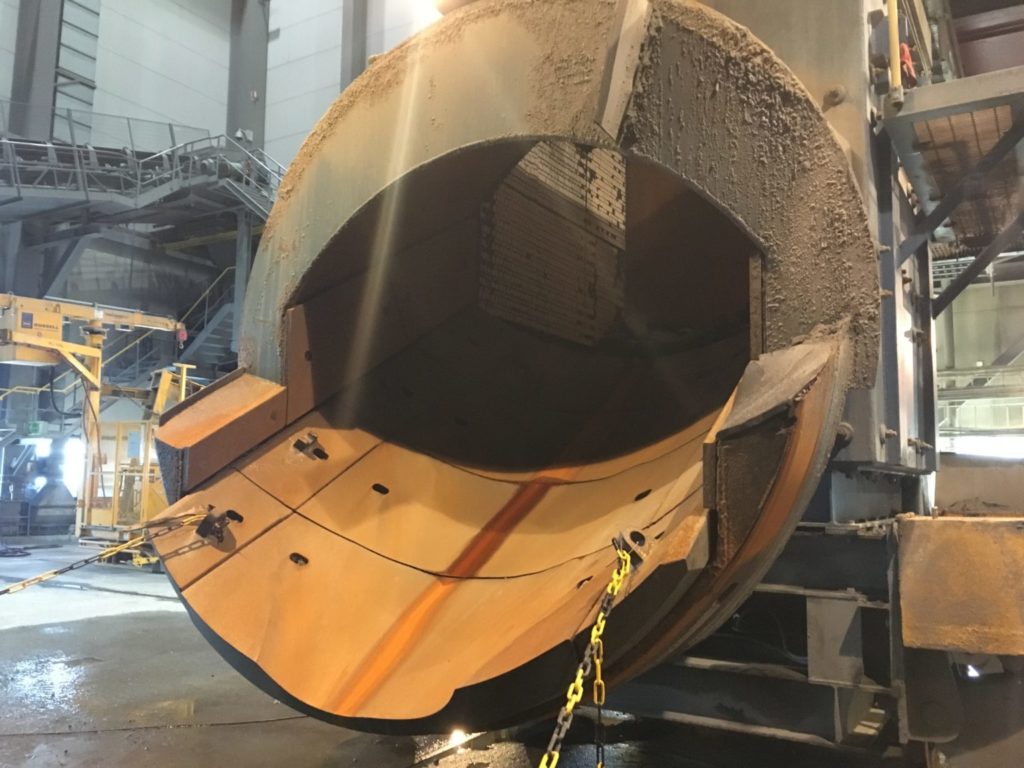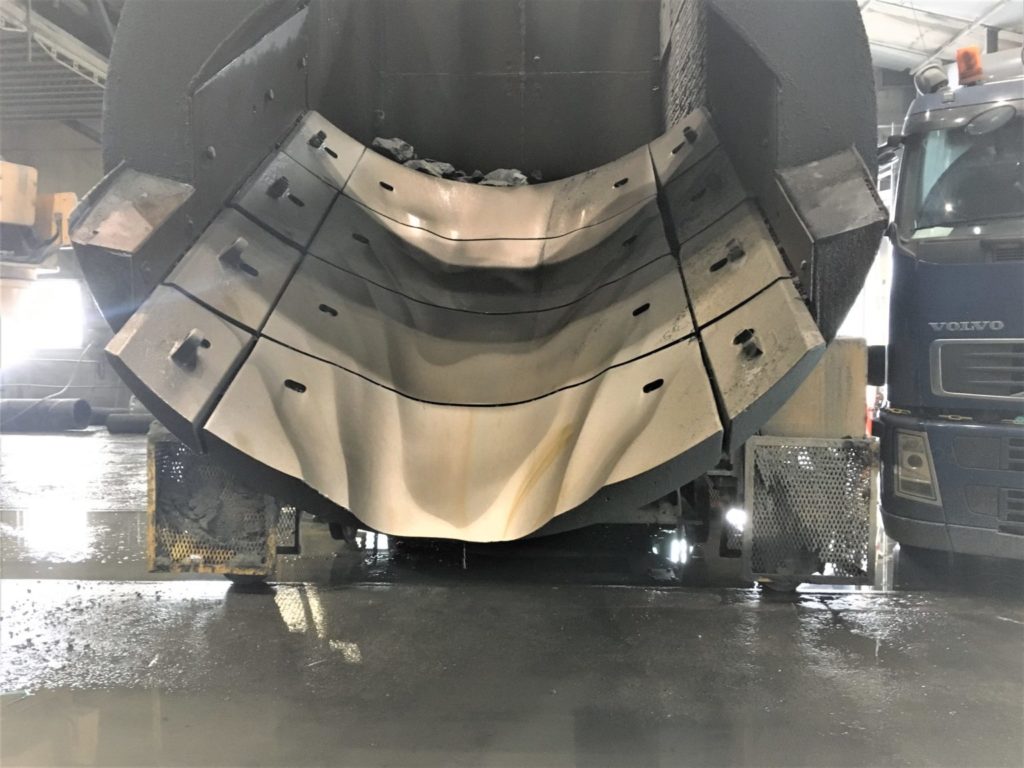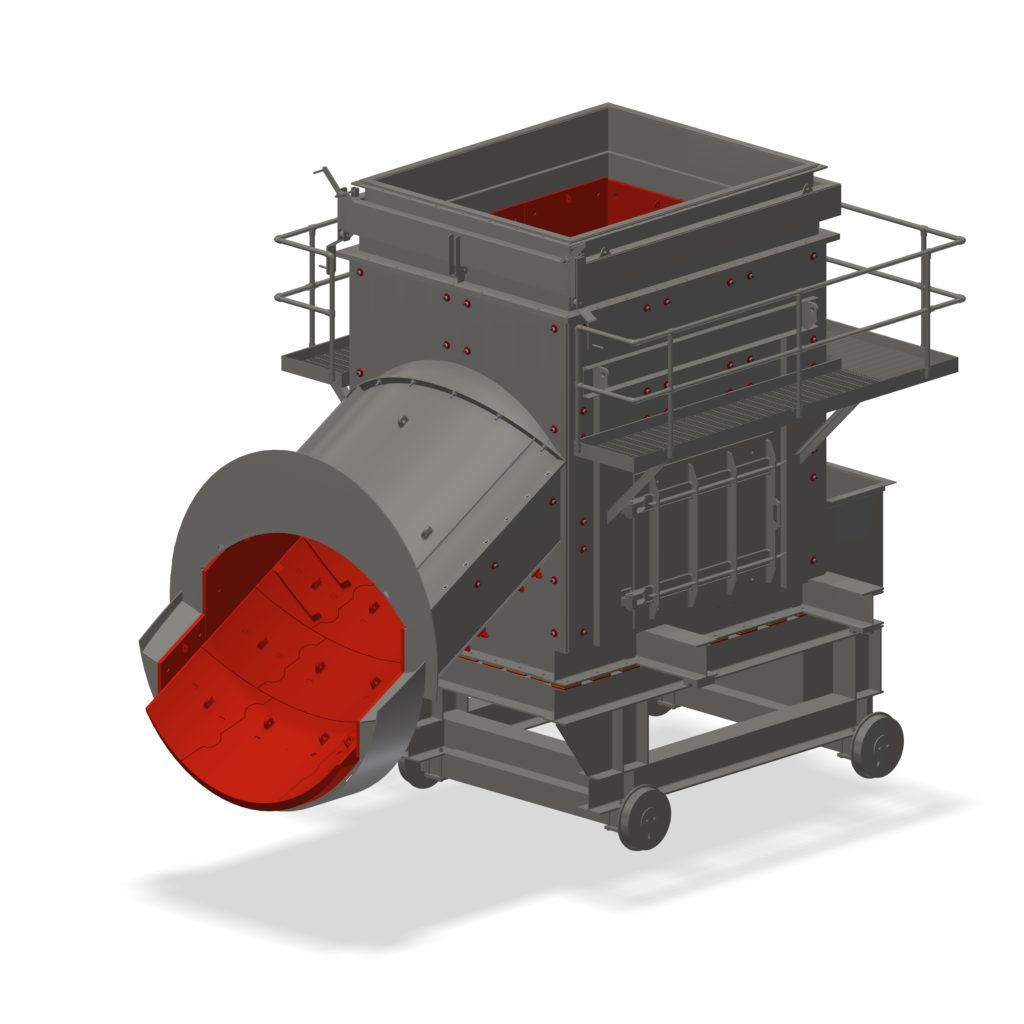Three things to consider for your SAG Mill Feed Chute – downtime, safety and access
When it comes to servicing or maintaining a grinding mill, many customers focus on the mill itself rather than all its related components. One such component is the feed chute, which is often overlooked. However, it is a key part in the grinding process that can cause you downtime if neglected. A well-engineered and maintained feed chute provides reliable production without compromising safety or efficiency.
There are several challenges that customers encounter frequently regarding feed chutes:
- Difficulty in replacing chute liners due to damaged or uneven liner wear;
- Safety concerns during maintenance; and
- Access issues when doing service work.
To address these issues that can often impact production or scheduled shutdown delays, it is important to look for a design that reduces downtime, improves safety, and simplifies service access.
At Metso Outotec, we recently took an in-depth look at how our customers service their mills and found that feed chutes can be an important source of frustration. Leveraging our company wide experience, we examined our customers’ issues and explored design solutions based on the feedback received from the field.

Tackling the difficulties in replacing chute liners
Problem: Production downtime can be one of the biggest consequences related to feed chute issues. Planning and scheduling is often seen as the solution, or at least the first step, in reducing unscheduled downtime. However, frequent maintenance schedules cannot yield the same results that a well-engineered feed chute solution could offer. One of the main causes of downtime related to feed chutes is uneven wear on the chute liners. Abrasive slurries can quickly wear through liners and even the chute itself if the liners materials are not suitably abrasion and impact resistant.
Solution: Changing out the liners brings about its own challenges. If done without the correct tools, it can cause excessive downtime. The real key is having better access to the liner area to rapidly change out wear components when they are damaged or worn. The design of many traditional feed chutes can make it difficult and time consuming to change out these wear parts.
An important part of the solution is to design chute liners that can hold up under demanding conditions for a longer period before they need to be changed. Areas such as the bottom of the feed chute can also be better protected with an autogenous layer of ore. This solution often referred to as a “rock-box” design can extend the life of the chute liner in certain applications. Another part of the solution is to design better access points to improve liners replacement times. For example, rather than personnel needing to crawl inside confined areas of the feed chute, designing the feed chute with removable covers allows for easier access to remove and install liners.
Putting safety first
Problem: Safety is a primary concern, and it is essential to keep it at the forefront of the operation. It is important to rely on a combination of safety practices and equipment to reduce exposure to safety hazards and ensure protection from harm. One safety concern is that there is often spillage around the feed chute openings from slurry. This can result in slippery and unsafe conditions around the equipment, which can result in injury to personnel. In addition, many liners and components are heavy and difficult to manipulate. Servicing or changing liners often involves service personnel maneuvering through tight areas or working in confined spaces. Lastly, as the upper part of the feed chute is often hard to access, it can involve service personnel working on ladders or under challenging conditions to get to these hard-to-reach places.
Solution: The design of a proper feed chute should take these factors into consideration. The creation of drip chutes aid in avoiding spillage. Maintaining a clean and orderly work environment can often help reduce slips and falls.

Liners should be designed to accommodate proper lifting tools to limit potential accidents while handling large and cumbersome components. Lifting lugs or integrated lifting points are a good solution to incorporate to avoid make-shift solutions. Lastly, an integrated railing and safety platform should be put into place, so personnel do not have to put themselves into high-risk situations when they are working at heights.
Accessing hard to reach areas
Problem: For many operators, it is difficult to access the upper feed chute since it is towards the top of the mill. In addition, conducting maintenance inside the rock-box where space is limited can mean service teams have to perform their work from inside the equipment. It can also be tough to install and replace wear liners in the chute itself because of confined space.
Solution: Simplifying access can provide increased service efficiency and bring multiple benefits when it comes to maintenance. One way is adding a proper access platform which makes it safer and easier to access the upper feed chute and inspect the rock-box. The access platform should allow operators to have a stable area to perform any other necessary maintenance, such as servicing flanges and seals. The creation of the removable chute cover offers easier and safer access for the installation and replacement of wear liners. The addition of well-placed hatches on the side of the rock-box also facilitates service work.
When faced with these problems and examining potential solutions, features were combined into one package. The result was the newly launched Mill Feed Chute Solution. The new features in the Mill Feed Chute aim to reduce and prevent safety risks and address customers’ liner challenges head on. The multiple upgrades can help customers minimise disruption and maximise uptime, provide additional safety for workers, and help to simplify and speed up maintenance.














